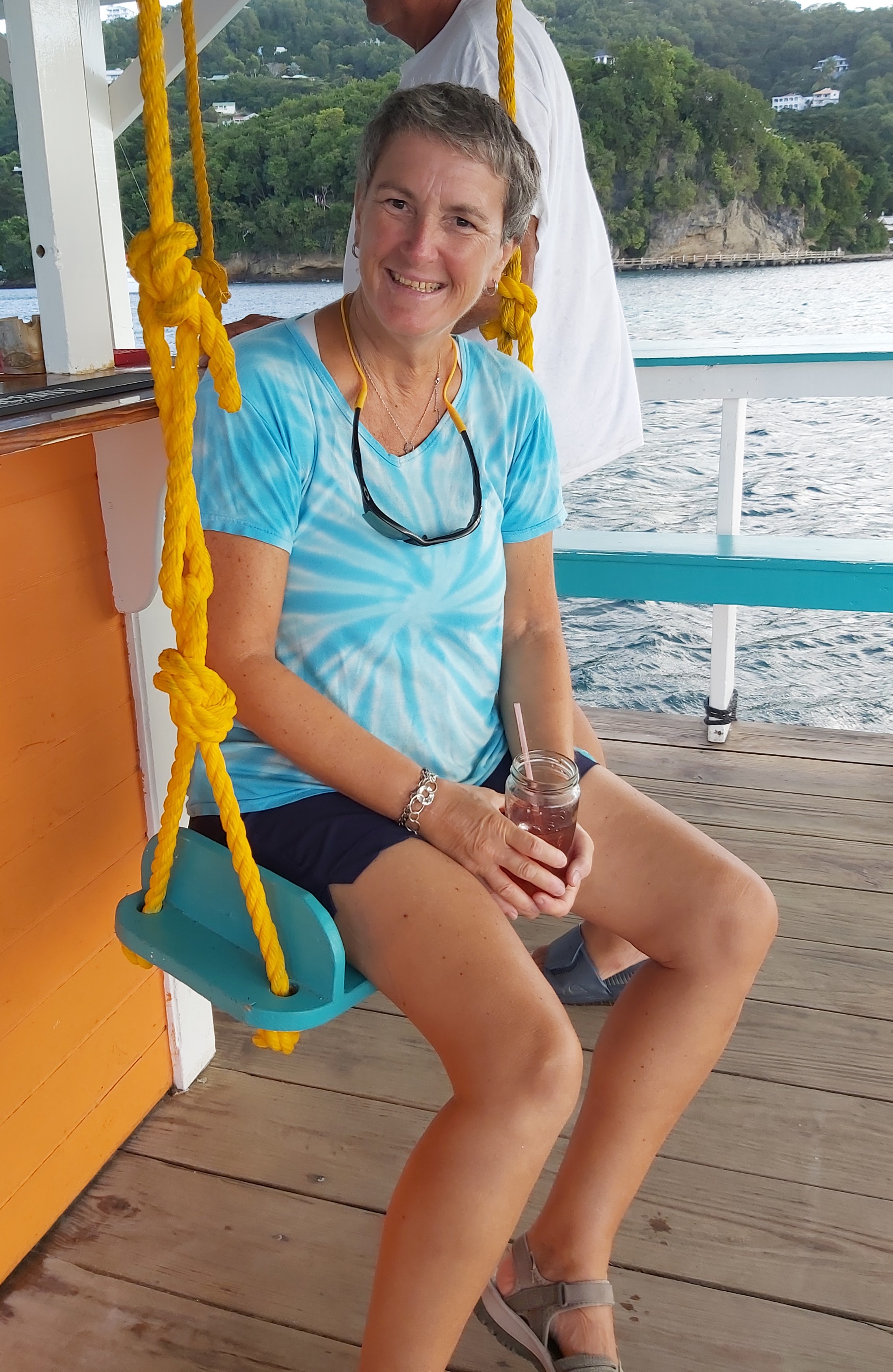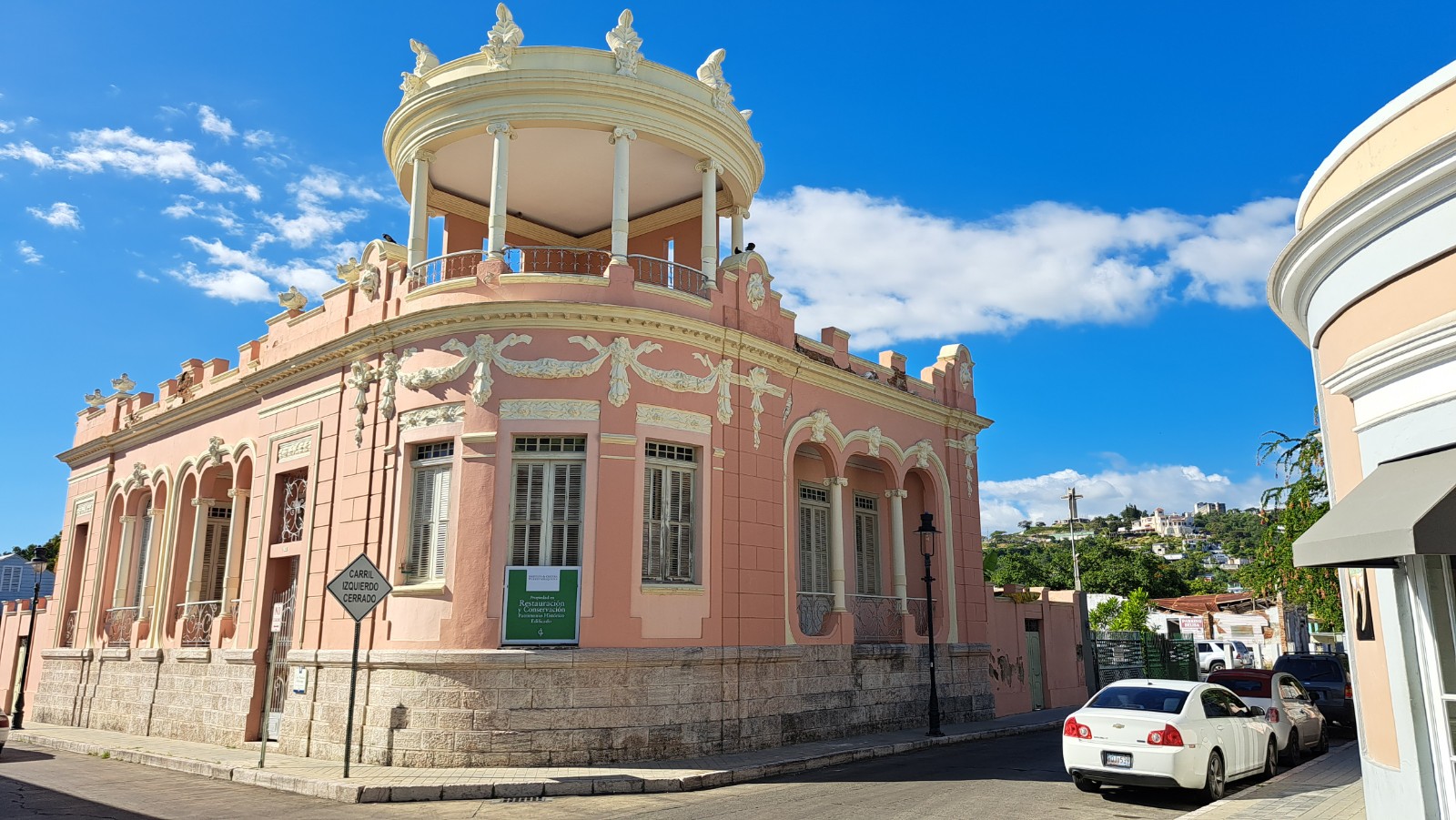January 23
In Bequia, our friends from Sherbrooke, Jocelyn and Natalie on Mordicus, arrived as planned after a full day sail from Martinique. We knew they would be tired so we had happy hour on Komeekha then headed to a restaurant on the beach. It was so nice to catch up with them. We thought theyˋd leave the following morning because they had some repairs planned in Carriacou in a few days. We were glad to hear that they wanted to stay one more day. Jocelynˋs and Natalieˋs English is limited so Frank helped them by calling the marina to discuss their upcoming repair. A sail to Carriacou, being southbound, they had the perfect winds to sail when they wanted. We promised to spend some time together on their way North in a few weeks.
The Christmas winds have finally started! The Bermuda High - a subtropical high with winds of about 30 knots - is very strong in the summer but stays North. By December, the North storm track pushes this subtropical high Southward and brings these strong winds which appear in the Carribbean Island from the East-North-East. When we sail, we get the most performance when the winds blow on the side or the side and stern of the boat. Before the North-East Christmas winds start, many veteran sailors of the area sail North, taking advantage of the light winds. Their strategy is to sail as North as they want at the beginning of winter, then slowly sail back South until spring. For us, we had decided to take it easy this year: sail North slowly, when weather permits, up to Martinique then sail back to Grenada before May. Now that weˋre in the middle of Christmas winds, the windows to travel North are short and apart, a day a week approximately. For us, these rare windows are important because we have a small sailboat. If we travel in strong North East winds, we get big splashy waves, slow uncomfortable progress, long long frustrating trips.
A couple of days before Jocelyn and Natalie arrived, a Canadian boat, anchored just behind us, came to introduce themselves on their way to shore. Benoit and Dominique on Andromeda are from Lac Megantic, Quebec. Theyˋve been sailing during winters in the Carribbeans for 7 years. After Jocelyn and Natalie left, we had happy hour with them on Komeekha. What a nice couple! We learned about the adventures with having to fly home after a 3-day notice when covid started (Martinique-Paris-Montreal). We all had so much to talk about. Like us, their plans were to sail to St. Lucia on Friday the 19th.
Anchored near Komeekha, there was a floating cocktail bar with swings instead of chairs. It was funny to sway with the rythm of the music and the constant but gentle waves as we look at the sun set, our last evening in Bequia.
At 06:00 the following day as soon as the sun rises, Komeekha with 8 other boats left to sail North - 60 miles to go to Marigot Bay, St. Lucia. We eventually wanted to get to Rodney Bay at the North tip of the island; but we decided to stop in Marigot Bay for a night, hopefully before the Customs office closes for the day (we pay CDN $50 extra for weekend staff).
The forecast at 04:00 is wind/gust strength (20-25 knots), direction (East-South-East), waves (1.5 to 2 metres). All items in the boat are secured; the sails are prepared; the meals are made. It starts raining when we leave. No problem, in shorts, bare feet with a rain jacket, all's good.
Bequia is a small island; sailing its lee was short lived (small waves, breezy). We raised our sails with 2 reefs each (this means we didn't open them completely, not knowing exactly what we'll be facing and how Komeekha will react). Because there are only 8 miles between Bequia and the next island, St. Vincent which create a wave funnel, and because the currents were against the waves which make the waves steeper, this 8-mile stretch was the worst part of our 60-mile trip. The waves were confused, coming from all directions, sometimes 2 metre high. The wind was very gusty (to 30 knots) so Komeekha was sometimes heeling more than we like. Sailing this confused sea felt like riding a bucking bronco, as Frank would say. We reduced our sails even more and then we endure this for 2 hours, knowing we were not alone.
In the lee of St. Vincent - 15 miles long, now all have calmed down - us included. We completely opened all the sails and started the watermaker. I prepared breakfast (a simple one, our poor stomachs can only handle so much). The coffee that I made before we left had dropped and spilled in the sink.
Now that we had a chance to eat and relax for 3 hours, we were ready for the next leg of our trip: St. Vincent to St. Lucia, 22 miles. The winds and waves picked up but stayed in the same direction, so it was more predictable. Still, we had 3-metre swells and with waves on top and the winds still gusting at 27-30 knots. That bronco wouldn't let up!
By the time we arrived in Marigot Bay at 16:15, we were exhausted. This bay is small, narrow and beautiful. It's surrounded by high cliffs, lush vegetation, few houses and only one resort. The water had barely a ripple. An oasis after our bronco ride. This time we payed for a mooring ball; the anchoring area is very small and crowded. After customs clearance, we ate the spaghetti that I had thawed that morning. That night, we slept like babies until after the sun rose.
We sailed the remaining 8 miles to Rodney Bay on Saturday. Rodney Bay is huge so there's lots of space to anchor. We see many Canadian boats, our social life ... line. So far, we haven't done much besides walking in town, doing some provisioning for the week we'll spend here. Our friends, Benoit and Dominique are nearby. Besides meals and happy hours, we're planning some activities together: hikes, snorkeling, bus touring, and a tree-to-tree rope adventure and ziplining.
Yesterday, a boat boy sold us 12 pounds of fresh tuna (dark pink) and dorado. We had a wonderful dinner of dorado with our friends.



